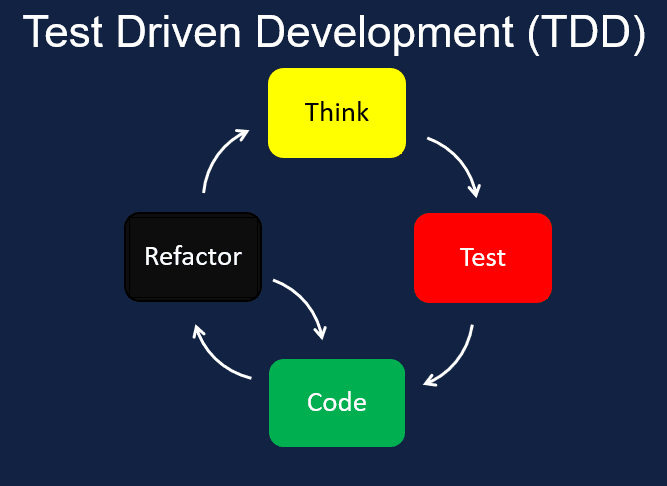What is TDD (Test Driven Development)
Test driven Development (TDD) is a software development methodology where developers write automated tests before writing the actual code. The core principle is to write a test see it fail, write the minimum code make it pass, and then refactor.
Key points about TDD:
- It's an Interactive approach combining programming, unit test creation, and refactoring.
- Tests are written before the actual code implementation.
- It follows a "Red-Green-Refactor" cycle:
- Write a test that fails (red)
- Write code to make the test pass (green)
- Refactor the code (refactor)

Benefits of TDD
TDD offers several advantages:
- Improve code quality and reliability
- Encourages writing testable, loosely-coupled code
- Provides quick feedback during development
- Helps in better analysis and understanding of requirements
- Enhances productivity and leads to more maintainable code
Basic of testing with Jest
What is Jest?
- JavaScript / Typescript testing framework developed by facebook
- Test runner
- Assertion library with powerful set of matchers
Advantages of Jest:
- Most popular test framework, most supported
- All in one solution: (test runner, assertion library, matchers)
- Typescript support
Project setup:
Create new nodejs project
mkdir jest-testing
code jest-test
pnpm initInstall required dependancies
pnpm i -D typescript jest ts-jest @types/jest ts-nodeInitialize jest config file
npx ts-jest config:initAfter initialize jest config it will create js file but we going to use typescript so let's delete jest.config.js and create new one jest.config.ts and pass below code inside
import type { Config } from "@jest/types";
const config: Config.InitialOptions = {
preset: "ts-jest",
testEnvironment: 'node',
verbose: true
}
export default config;Lets create src folder and 2 more sub folder call app and test
node-module
src
├─ app
│ └── Utils.ts
└─ test
└── Utils.spec.ts / Utils.test.ts
jest.config.ts
packages.json
pnpm-lock.yamlLet's write some code inside Utils.ts file
export function toUpperCase(str: string) {
return str.toUpperCase();
}
export function toLowerCase(str: string) {
return str.toLowerCase();
}Inside let's add some testUtils.spec.ts
import { toLowerCase, toUpperCase } from "../app/Utils";
describe("String utils test suite: ", () => {
test("should return upper case string", () => {
const result = toUpperCase("hello");
expect(result).toBe("HELLO");
});
test("should return lower case string", () => {
const result = toLowerCase("HELLO");
expect(result).toBe("hello");
})
});Proper structure of unit test
AAA principles:
- arrange
- act
- assert
import { toLowerCase, toUpperCase } from "../app/Utils";
describe("String utils test suite: ", () => {
it("should return upper case of valid string", () => {
// arrange:
const sut = toUpperCase;
const expected = 'HELLO';
// act:
const actual = sut('hello');
// assert:
expect(actual).toBe(expected);
});
it("should return lower case string", () => {
const sut = toLowerCase;
const expected = 'hello';
const actual = sut('HELLO');
expect(actual).toBe(expected);
})
});
